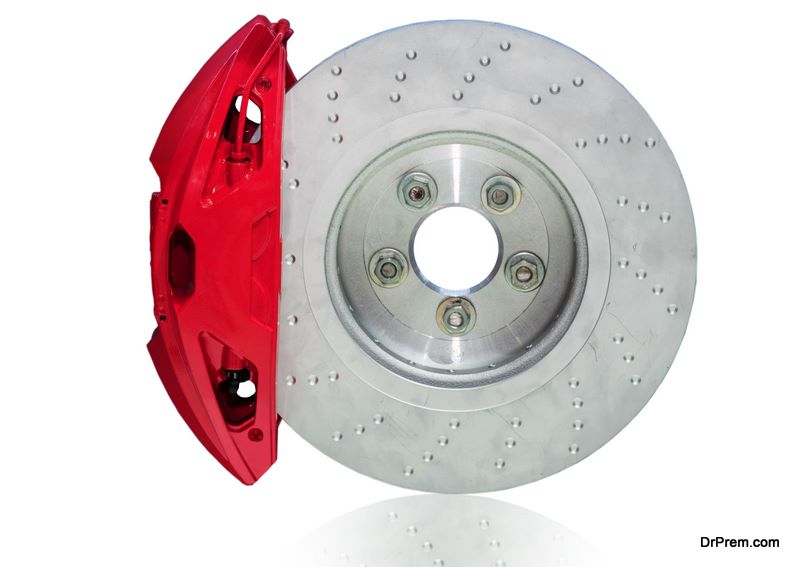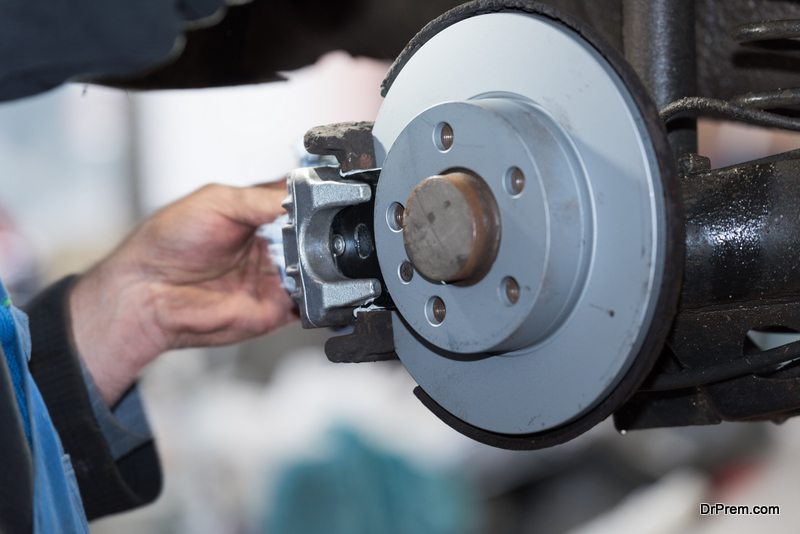Professional racers and hobbyists alike put a lot of time and money into making their cars go faster. But on the slightly-less glamorous side, they also have to invest in reliable brakes. But a racecar’s brake system is just as much a marvel of modern engineering as the engine and aerodynamic exterior. For first-time racers and new fans of the extreme sport, this article will break down everything you need to know about a racecar’s brake mechanism.
How Disc Brakes Work

A brake’s hydraulic and friction system enables a light touch to a pedal to generate enough force to stop a moving vehicle. How does it work? The brake pedal is attached to a hydraulic piston inside a cylinder. The hydraulic piston is a long stroke, a small-bore piston that pushes fluid to the four wheels. Each wheel has one or more wide, shallow pistons to squeeze the brake pads against the spinning brake disk on a wheel hub. When the brake pads make contact with the brake disk, the friction created slows down the vehicle.
All About ABS and Threshold Braking
An anti-lock brake (ABS) is a computer system that monitors each wheel’s speed while the brake is in use. If any of the wheels are slowing faster than the others, the ABS kicks in, prompting an electro-hydraulic valve to “pump” the brakes on that individual wheel. Threshold braking is the braking pressure required to slow the car without locking the wheels or triggering the ABS.
Brake Fluid Boils

Brakes can fade over time due to use; this applies to both racing and everyday street use. The friction between brake pads and disks can naturally cause heat, and if braking becomes excessive, the brake fluid can heat up as well. If the brake fluid starts to boil, it creates air bubbles that make the braking system less efficient.
To counter brake fluid boils, racers need high-temperature brake fluid with a 600 degrees Fahrenheit or higher boiling point. Keep in mind that high-temperature brake fluid needs to be changed more frequently, typically once a year.
When brake fluid returns to normal temperature, it can absorb the air bubbles, and the brake system will function as expected. However, brake fluid that has boiled before will likely boil again, making it critical that racers bleed their brakes and replace the heat-damaged fluid.
Calipers and Pads
Street brake pads are for normal driving conditions. They can handle below-freezing temperatures and hot temperatures, but they do not work well under the on-track application’s constant heat. Racecars need high-temperature brake pads. But the high-temperature brake pads are not as reliable when cold, and they can get pretty noisy. For those reasons, they are not suitable for street applications, so drivers usually fit them at the track.
Originally, disc brakes had a piston on each side of the disc, known as a fixed caliper. Innovation has evolved fixed calipers to have four pistons on each side. Fixed calipers are easier to change, give a stiffer pedal, and are more heat resistant.
Another option is using a single piston that squeezes both sides of the disc via a sliding sleeve mechanism. These sliding calipers are cheaper, better at shedding weight between brake applications, and easier to fix, making them a popular choice.
Some cars have equal size front and rear brakes, while others have bigger brakes upfront and small calipers in the back. Racers make this choice based on weight distribution. A front-drive, traverse-engine car has less weight in the back, so the back’s calipers have less work to do. On the other hand, mid-engined and rear-engined cars need a more balanced approach.
Brake Upgrades

Many racers choose to upgrade the original equipment manufacturer (OEM) parts in their vehicles. People generally upgrade their brakes for one of two reasons: improving performance and customizing their car’s appearance further. Upgrading your brakes can decrease stopping distance, improve operator safety, and extend the brake system’s lifespan. To upgrade your system, you can switch out the following parts for high-quality models:
- The brake master cylinder
- Rotors
- Brake lines
- Brake pads
- Calipers
Your Support System
If you plan to race your car, you need brakes that will endure the stresses of a track. You need a braking system that shortens your stopping distance, can operate at high temperatures, and make your car safer. To improve your vehicle and your performance, take the time to understand your brake system and what repairs or upgrades it needs to support you on the track.
Article Submitted By Community Writer




